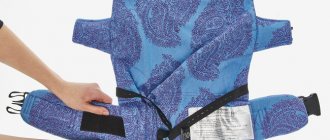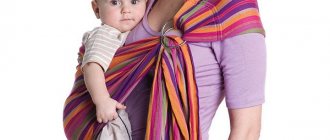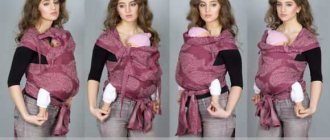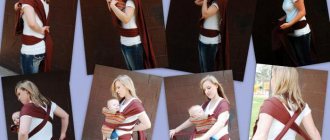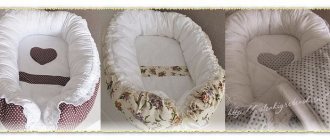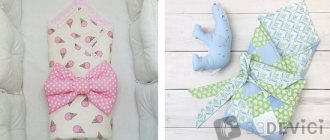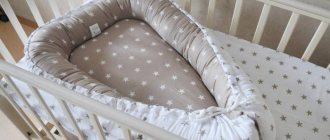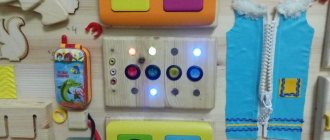03/06/2017 The purchase of a sling determines the material from which the sling is woven. It would seem that the choice is very large, but having understood this topic in more detail, we understand that in fact there are certain types of fabrics from which slings are sewn.
First of all, it should be noted that the fabric used to make slings is woven directly for these purposes - in order to create a sling for carrying a small baby in it. From here we draw the first conclusion: a good sling is a sling made from fabric that was created directly for the purpose of babywearing. The slings of European brands, which you will find on the pages of Slingopark, are distinguished by precisely this type of production.
It is likely that with a great desire and a long search, it is possible to find domestically produced slings that, in terms of tactile and technical characteristics, are vaguely reminiscent of “real” slings. However, you should understand that the domestic manufacturer offers for sale slings made from fabrics purchased at the nearest store. Unfortunately, these fabrics do not have a number of positive characteristics that absolutely any sling of the “correct” fabric has. Unfortunately, the fabrics produced and imported into our country do not have high quality and environmental friendliness of the material. And yes, these are the parameters that primarily distinguish “sling” fabrics.
As a rule, the fabrics from which slings of European brands are made have:
- environmental certificates for the yarn from which the sling is woven
- environmental certificates for the dye that is used to dye the yarn before it is sent for weaving
- European quality mark
In addition, slings from different manufacturers often have additional quality indicators that they obtain by improving their fabrics from year to year, such as OKO Test, SPF protection, etc. Also, often a European manufacturer uses organic cotton in the production of slings.
But these figures are just the tip of the iceberg. Let's dive deeper and find ourselves in the mysterious world of weaving slings, ideally suited for carrying our babies.
First, let's look at woven types of slings, that is, slings that are created on looms. At the end of the article, we will definitely mention knitwear and slings for newborns and premature babies.
The main indicator of a sling is the weave of the threads of its fabric, that is, the order of the relative arrangement of threads in the fabric of the sling, which determines its structure, appearance and properties. In fabrics, the interweaving of threads is characterized by the obligatory presence of systems of threads perpendicular to each other - warp and weft. During the weaving process, warp threads are subject to significantly greater tensile and bending deformations, as well as abrasive effects of the working parts of the machine, than weft threads. Therefore, for the warp, stronger yarn is used, with greater twist, made from higher quality fiber. Weft threads are transverse threads of fabric located perpendicular to the warp threads. The weft experiences less stress during the weaving process than the warp, so thinner yarn is often used to make it.
A loom produces different types of fabrics from warp and weft threads. Depending on the mechanism, the machines are eccentric (for fabrics with simple weaves), carriage (for finely patterned fabrics) and jacquard (for fabrics with large, complex patterns). The order of alternating warp and weft threads ensures the production of fabrics of various weaves of threads.
Typically, the order of weaving the threads is repeated both across the width and length of the fabric. The repeating part (motif) of weave on fabric is called rapport.
| The simplest rapport for plain weave fabrics, threads - these are the simplest fabrics, for example calico, which is used for children's thin diapers: |
Slings are woven in several types of thread weave:
- Double diagonal weave slings
- Diamond weave slings
- Jacquard weave slings
- Satin weave slings with jacquard elements
- Knitted slings-scarves
For the first sling, in which we learn, master new windings, and practice adjustment, we choose a sling with double diagonal weave of threads .
Weaving machine for slings with double diagonal weave threads
| This is what rapport of sling fabric looks like double diagonal weave thread (this is one of the varieties of twill weave, also called compound or multi-ribbed twill): |
Author's instructions for the scarf sling
In the section "Articles about slings, Author's windings"
Errors and inaccuracies in TV stories and publications about slings
Safety precautions when using a sling
Potential dangers of a sling bag
WHAT SCIENCE SAYS ABOUT Slings
Shaken Baby Syndrome
Slings, strollers and stress. Which is better: horizontal or vertical position during the newborn period?
The importance of the baby's position in the carrier
Sling in the postpartum period
Sling - benefits from a pediatrician's point of view
A “tame” child—an achievement or a flaw? (about the importance of the manual period for children under one year old, author Anna Lapshina)
Carrying children facing away from you (is it useful or harmful to carry babies “facing the world”? - author Anna Lapshina)
Babywearing mothers strike back? (how to respond to the advice and questions of others without losing your dignity and good mood, author Anna Lapshina)
Does the mother-in-law have the right to advice? (how to achieve understanding and mutual respect with relatives on child care issues and communicate to mutual satisfaction, authors Anna Lapshina and Tatyana Lapshina)
A tub of cold water (how to react to the rudeness of passers-by, author Anna Lapshina)
Argument without losers (about disputes and constructive communication, author Elena Kamenets)
Why not knitwear?
And really, why not? Knitwear is easier to learn and is also suitable for newborns, and this is the option offered by global manufacturers of ergo backpacks. They say, wear knitwear for several months, and then you’ll grow into a backpack. There is one nuance - any knitwear stretches and loses its shape. That is, it is obviously designed for a short period of carrying a light baby. If you want to use the sling for a long time or carry a child that is already quite heavy, then knitwear will not work.
Knitted sling scarf Manduca
About carrying
A “tame” child—an achievement or a flaw? (about the importance of the manual period for children under one year old, author Anna Lapshina)
How important it is to carry a child on yourself (about the benefits of carrying babies in your arms, author Anastasia Vtulova)
Wearing, must not be put off (about the importance of carrying in your arms; with photographs of positions for carrying newborns, author Elena Mikhalkova)
Carrying a child in your arms (how to properly carry a child in your arms - different positions, correct distribution of the load; article)
How to carry a baby on your hip (how to carry a baby on your hip correctly, what to do if the baby doesn’t want to hold on to his mother with his legs, author Anastasia Polugrudova)
Attachment to parents is beneficial for children (about the return of traditions of carrying children, author Maria Molina)
For walkers
A separate topic is scarves for children who are already actively walking on their own, but periodically ask to be held by their mother. Sometimes you have to catch a grimy toddler from a puddle and, before he runs off to explore the next one, “reel in” the sling in accelerated mode. The scarf should hold unfinished wraps and not be afraid of colliding with soiled clothing.
When choosing such a sling, it is important to take into account not only the density and composition of the fabric (scarves containing flax and hemp are considered more wearable and “cargo-bearing”), but also the “non-staining” color and texture. Standard stripes from Didymos, slings from the Mum's Era, Vmeste brands are perfect. By the way, striped slings have one unobvious advantage - by the location of the stripes it is easier to understand the correctness of the winding: whether the panels are twisted, which edge should be tightened or loosened.
Didymos striped sling scarf
Baby carrying devices
Comparing a “kangaroo” and a sling (using the example of a sling-scarf) (about the difference between slings and “kangaroos”, with photographs, by Evgeniya Siparova)
What is the difference between a sling and a kangaroo? (on the advantages of various slings over kangaroo baby carriers, the opinions of doctors are given, authors Irina Thoreva and Oksana Baranova)
Hands, kangaroo or sling (about the advantages of a sling with rings over a kangaroo, author Anastasia Vtulova)
What kinds of devices are there for carrying children (description of some devices for carrying a child, Kengurusha.ru)
Types of slings and other devices for carrying children (review article, authors Alla Kornilova and Evgenia Siparova)
How many slings are there in the world (description of the main types of slings, author Yulia Tarasova)
Slings, strollers and stress. Which is better: horizontal or vertical position during the newborn period? (author - Elizabeth Antunovik, translation - Veronika Migulina)
* * *
For most modern manufacturers, the characteristics of scarves change from collection to collection and each limited edition. For example, the limited edition Didimos Prima (Indio) can be as thin as gauze or thick as a coat. There is also a whole class of hand-woven scarves, each of which is unique in composition and wearing characteristics.
With such diversity, it is extremely difficult to resist and be content with just one scarf. However, if your budget does not allow you to buy separate slings for all occasions, careful and thoughtful selection will allow you to feel comfortable and joyful throughout the entire babywearing period, even with a single scarf.
Sewing recommendations
What else do you need to know before getting started? If you decide to make a sling with rings, purchase metal rings with a diameter of 7-8 cm in the accessories department of a fabric store.
If your goal is a sling, don’t forget to buy padding polyester for the straps. And choose threads in accordance with the thickness of the fabric from which you will sew your product.
Important point. Before you start cutting out the parts of the sling, the fabric from which you are going to sew it should be washed so that it shrinks.
It’s quite easy to sew a sling scarf, but you still need to learn how to wrap it correctly
The main advantage of a sling-scarf is that by varying the options for winding it, you can distribute the load on your back and shoulders in a way that is comfortable for you.
In order to sew a sling scarf, you will need a spool of thread and a piece of fabric 3-6 m long and 45-70 cm wide. Wider and longer is better. It will be more convenient for you to wrap a long sling, and as the baby grows, it takes up more and more space in it.
You can also focus on the position in which you will carry the child.
- “Cradle” (from birth) and “on the hip” (from 6 months) – 2.5-3 meters of fabric is enough.
- The same positions, but with the distribution of the fabric over 2 shoulders - 3.5-4 m.
- A universal sling scarf with the ability to carry a baby from birth to 3 years in any position - 4.5-6 m.
It is very important to correctly calculate the size of the scarf sling. They must correspond to the position of the child, his age and the physique of the mother
Don’t forget also that the length of the scarf sling depends on the characteristics of your figure. The larger the mother, the longer the sling should be. And mothers of fragile physique have absolutely no need to carry extra centimeters of fabric on themselves, and, moreover, overpay for them.
To determine which length is right for you, add a zero to the right of the clothing size you wear. And you will get the optimal sling length for you. You have size 46, you need to buy fabric for the sling 460 cm or 4.6 m. Owners of size 52 need to sew a sling 5 m 20 cm long.
Once you have decided on the size of the rectangle of fabric for the slig scarf, take the necessary measurements and cut it out. Then finish the edges (if it's not a hem) using a serger or a closed hem stitch. All. Your sling scarf is ready.
A ring sling is worn on one shoulder, unlike a scarf sling, which provides the opportunity to evenly distribute the load on both shoulders
With rings
The ring sling is quite easy to put on, take off and adjust. But when carrying a child in it, the entire load falls on one shoulder. Therefore, it is convenient to use it only for carrying babies up to one year old.
A sling with rings can be made either using a stitch to secure the rings, or without sewing
You will need fabric 220x80 cm, a spool of thread matching the tone, and 2 metal rings with a diameter of 60 to 80 mm.
Sewing technology
- Measure the required length and width of the fabric and cut out a rectangle.
Sling with rings: pattern
- Finish the edges with an overlocker or a closed hem stitch.
- Thread one end of the fabric through both rings and secure it with a few stitches.
- Throw the sling over your shoulder.
- Insert the other end of the fabric into the rings.
- Then thread it in the opposite direction into one ring.
- Adjust the position of the sling using the rings.
Video “We sew a sling with rings with our own hands”
With rings without sewing
A ring sling can be made without sewing.
- To do this, thread one end of the fabric (from 2 to 2.5 m long and 80-90 cm wide) into both rings.
- Measure 40-45 cm and return this end back to one of the rings.
- Place the short edge with rings on your shoulder, and wrap the long edge around yourself.
- Thread the long end of the fabric through the rings in the opposite direction from the short end (again, first into 2 rings, then into one).
Video “How to make a ring sling without sewing on the rings?”
But the sling-may, unlike the sling with rings, is more suitable for wearing children from 6 months and older. Since the child sits in a sitting position.
May is very similar in design to a kangaroo. But in it the baby is in a more comfortable position. The baby's legs are spread apart, and he seems to be wrapping them around his mother. Which serves as a good prevention of hip dysplasia in infants.
What do you need to sew a baby sling with your own hands? Fabric of your choice – 210 cm, thread to match the fabric – 1 spool, padding polyester (150 cm wide) – 16 cm.
This is what a hand-made sling looks like
Sewing technology
- Open out the details of the sling. Don't forget to allow seam allowances (1.5 cm will be enough). Back – 2 pcs. Bottom strap – 1 pc. length 163 cm. Upper straps – 2 pcs. length 210 cm.
- Also cut out inserts into the upper straps from padding polyester - 2 pieces measuring 140x8 cm.
- Now proceed directly to sewing. Sew the top straps first, folding each one lengthwise with the wrong side facing out.
- Turn the top straps inside out and iron.
- Insert strips of padding polyester into them and every 15 cm, quilt with transverse stitches from the edge to the middle of the straps.
- Also stitch the waist strap along the wrong side, turn it inside out and iron it.
- Fold the edges of all straps inward and secure with stitching.
- Fold the back pieces inside out, inserting the ends of the upper straps between them (in the upper corners) so that they intersect in the center.
- Pin the straps.
- Sew the parts along the edge, turn the finished back right side out and iron.
- You can put padding polyester in it, just like in the upper straps, and quilt it.
- Insert the bottom strap into the bottom of the sling, pin it with pins and lay a stitch around the perimeter of your product.
- Then, to catch the edge of the waist strap, sew a stitch across the sling, 7.5cm from the bottom.
- Take out the pins.
- Iron the product, avoiding getting the iron into the places where the padding polyester is laid, otherwise it will become hard.
- My-sling is ready. Enjoy it for your health!
Video “How to make a baby sling yourself?” Part 1
Video “How to make a baby sling yourself?” Part 2
As you can see, it is quite possible to sew any of the slings with your own hands. Even if you are not particularly comfortable with a needle and thread. The knowledge gained in labor lessons at school will be enough for any young mother to cope with this task. The main desire. Use your imagination. Design, model, decorate slings to your taste, make them to match your favorite outfits. This is another reason for you, as a mother and as a woman, to look fashionable, look stylish, look unique...


